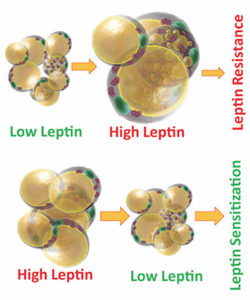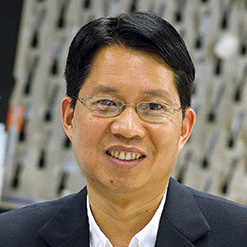![]() Every week, we do a little research of our own. We’re looking for scientists, professors, engineers, entrepreneurs—anybody, really—engaging in research and development across North Texas.
Every week, we do a little research of our own. We’re looking for scientists, professors, engineers, entrepreneurs—anybody, really—engaging in research and development across North Texas.
There’s plenty of good work being done. If you want to put R&D under your microscope, sign up for our e-newsletter.
UNT: Oak tree species pull black carbon from city atmosphere
Two oak tree species common across the southern U.S. remove black carbon from the urban atmosphere, according to a discovery by researchers at the University of North Texas.
Their findings may a possible natural way to improve air quality and climate, UNT said in a release.
READ NEXT: Discovery: How AI May Aid Heart Assessments; UTA Highway Research Tapped as ‘Sweet 16’ Project
Alexandra Ponette-González, principal investigator and associate professor in the Department of Geography and the Environment, led the study alongside graduate student Jenna Rindy. Collaborators included their colleagues at the University of North Texas, Baylor University, and the Cary Institute of Ecosystem Studies.
Black carbon is often called ‘soot’ in urban areas. UNT said it’s released into the atmosphere as a result of fossil fuels, biofuel, and biomass burning and is the second most important agent contributing to climate change.
When inhaled, black carbon may lead to respiratory and cardiovascular problems and is one of the most harmful components of fine particulate matter, UNT said.
The work was was conducted in Denton, where researchers measured the amount of black carbon particles captured by post oak and live oak trees, as well as the how much black carbon transported is to the ground when leaves fall, UNT said.
UTSW research finds surprise in obesity, overeating, diabetes work
Researchers at UT Southwestern Medical Center were surprised when they discovered lowering the levels of the hormone leptin may reduce obesity, overeating, and the insulin resistance associated with diabetes.

The hormone leptin is produced by fat cells and increases with obesity, leading to high levels of leptin in the blood. [Illustration: Courtesy Cell Metabolism, via UTSW]
According to a release, researchers found an antibody that can accomplish just that. It’s only been tested on mice so far, but the scientists are hoping to test the antibody soon in human clinical trials.
The surprise came when research uncovered an unexpected finding: reducing levels of leptin, not increasing them, is what reduced obesity and insulin resistance. in fact, too much leptin leads to resistance.
“We can actually show that more leptin causes leptin resistance,” Dr. Philipp Sherer, director of the Touchstone Center for Diabetes Research and senior author of the study that was published in Cell Metabolism.
UTSW said that like obese humans, obese mice already have a lot of leptin. That’s because it’s produced by an abundance of fat cells that put so much leptin into circulation that it overwhelms the brain’s receptors. Using an antibody to neutralize some of the leptin prods the brain’s receptors to start working again, so they can recognize the remaining leptin, Sherer said.
“We found a way to sensitize the receptors so the brain responds again to the hormone,” he said.
UTA prof, collaborators find promising results in cancer nanoparticle study

Wei Chen
A professor at the University of Texas at Arlington, in collaboration with colleagues from the University of Rhode Island and Brown University, has had promising results from research into the use of X-rays and copper-cysteamine nanoparticles to treat deep-seated tumors.
And, their work recently was published in the Proceedings of the National Academy of Sciences journal.
UTA said the work of Wei Chen and the others—introducing x-rays and copper-cysteamine nanoparticles in treatment—showed a statistically significant reduction in tumor size.
UTA said that the work builds on Chen’s work developing photosensitizer nanoparticles to use in photodynamic therapy, a cancer treatment method that activates reactive oxygen species to kill cancer cells without damaging adjacent, healthy cells.
“We continue to pursue multiple combinations within photodynamic therapy,” Chen said in a statement. “Each new discovery represents potential new avenues for treating cancer patients, because we can leave their healthy cells virtually unaffected.”
More research news
The University of North Texas announced that it is accepting patients for a specialized auditory processing assessment and intervention aimed at children with Autism Spectrum Disorder.
In a release, UNT said that it hopes to set standard testing procedures because most children with ASD experience some form of auditory processing issues and not standards currently exist. UNT’s College of Health and Public Service’s Department of Audiology and Speech Language Pathology will use a $111,843 grant from Sonova USA Inc. Find out more here.
READ NEXT: New Academy in Plano Offers Therapy for Children With Autism Spectrum Disorder
![]()
Get on the list.
Dallas Innovates, every day.
Sign up to keep your eye on what’s new and next in Dallas-Fort Worth, every day.

































